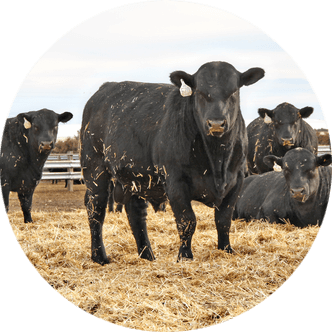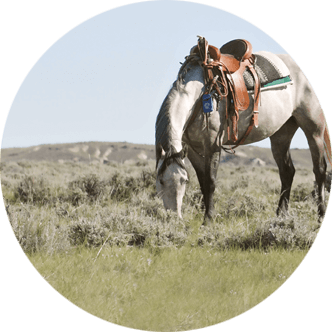Panel discusses natural disaster preparedness during WWIA Symposium
A panel discussion on natural disaster preparedness and recovery took place during the 32nd Annual Wyoming Women in Ag Symposium, held Nov. 6-7 in Gillette
Panelists included Meg Scales, a seedstock producer from Johnson County; Holly Schaack, a rancher from South Dakota; Amy Pravecek, a Zoetis business manager and rancher and Jessica Schuler, an insurance officer with Farm Credit Services of America.
Natural disasters and ag
During the discussion, panelists shared their personal experiences with natural disasters in Wyoming and surrounding states.
The three most common natural disasters posing threats to agriculture in this region are fire, blizzards and drought, and as the conversation underscored, these events produce conditions which are disorienting and life-threatening to people and animals alike.
Although the exact timing and conditions of these events are beyond producers’ control, learning from past events and community experiences, as well as developing emergency preparedness plans, can help mitigate lasting effects and immediate impacts of natural disasters.
Community and communication
Panelists emphasized the importance of communication and community involvement in both mitigation and recovery efforts from natural disasters.
The conversation highlighted the resiliency of local ranchers who band together in the face of emergency to fight fire, search for livestock in blizzards and to pitch in wherever possible, as well as the role of communication in providing comfort and information in times of uncertainty.
Recalling her experiences during the House Draw Fire in 2024, which affected nearly 175,000 acres across northern Wyoming, Scales noted a network of county radio signals served as the primary mode of communication for family members of local ranchers fighting flames in areas with low cellphone coverage.
It also provided an outlet to stay involved and exchange crucial information about the fire’s path, including which areas needed most immediate attention.
Scales recalled juggling multiple calls at once, balancing between dispatch and neighbors to help direct firefighting efforts in order to help save livestock, buildings and lives.
In the end, Scales credited “a very coordinated effort between emergency services, local ranchers and the local fire department” with the success of firefighting efforts in the face of unprecedented conditions.
Finally, Scales emphasized the role community played in healing from the fire’s impact.
She highlighted the often-unseen stressors of natural disasters, like holding families together and delivering groceries to neighbors unable to leave their homes, and acknowledged ways to contribute to recovery efforts from a non-financial perspective.
“One thing I think all of us can do as women in ag is look out for our neighbors,” Scales said. “At the end of the day, we’re all going to have disaster happen at a different point. Without community looking out for each other, we couldn’t do this.”
Proactive preparedness
In terms of emergency preparedness, Scales emphasized knowing neighbors’ phone numbers and understanding surrounding terrain are of utmost importance.
She highlighted software like OnX and Watch Duty as useful technological tools for understanding the surrounding terrain and monitoring the progression of fires and fire threat.
“Get proactive about understanding how fire will interact on your place and your neighbor’s place,” Scales recommended.
Additionally, Scales encouraged audience members to identify opportunities for organizing disaster relief even before it strikes and shared the example of the Johnson County Fire Relief Fund. She noted this fund was established through a pre-existing 501(c)(3) nonprofit, but emphasized a feeling of “being behind” when it came to navigating the legalities involved with converting the organization.
By working to establish or identify eligible entities earlier, she noted producers can avoid this feeling and be more prepared to get the ball rolling when it comes to organizing relief.
“If you are an active community member, I would really encourage you to start investigating now,” Scales said. “Find out what in your community can be a vehicle to serve fundraising efforts if a disaster does hit.”
Understanding insurance options and specifications was another central topic of the discussion.
Navigating insurance
Insurance can play a crucial role in disaster recovery, and panelists emphasized many moving parts go into ensuring producers get the most out of their coverage plans.
Pravacek shared her frustration with some insurance companies refusing to provide aid during Blizzard Atlas in 2013, which brought high winds and heavy snow that caused immense livestock loss in South Dakota.
She explained high moisture content and huge drifts caused cattle to drown, which was not technically covered under many blizzard insurance policies. This resulted in some court cases and extra burdens for ranchers who were already hurting, according to Schaack and Pravacek.
Pravacek further acknowledged the situation was unprecedented by all accounts and had to be navigated by everyone affected.
“To the insurance companies’ defense, something like Atlas had never happened before,” Pravecek commented. “Cattle deemed as drowning in a snowstorm was a new thing for all of us.”
Overall, panelists emphasized insurance policies can be beneficial but must be outlined with specific details in mind and updated constantly. Annual conversations with insurance agents were encouraged all around, and the importance of maintaining accurate and easily accessible records was also emphasized.
Schuler stressed the importance of having conversations based on experiences as well as hypotheticals with insurance agents to be prepared for a variety of outcomes.
“Sometimes we think of insurance as simply covering one thing, but there are a lot of different divisions we have to make sure would be covered from all angles in specific situations,” Schuler said. “This is where speaking with an agent and having in-depth conversations each year is going to help producers be more in control.”
“We can’t take away the emotions and distress in the moment, but hopefully when the dust settles, we have a little peace of mind knowing what we have things set in place to protect us from a financial perspective,” Schuler concluded.
Grace Skavdahl is the editor of the Wyoming Livestock Roundup. Send comments on this article to roundup@wylr.net.





